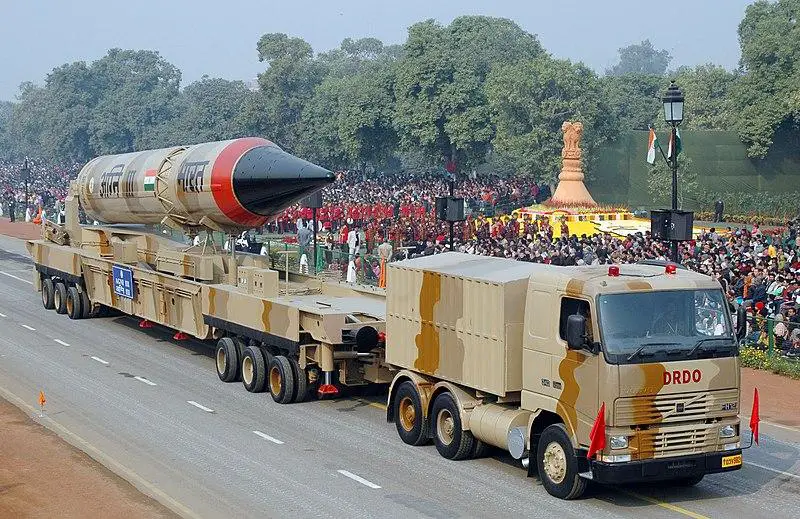India carried out a successful training launch of an Intermediate Range Ballistic Missile, Agni-3 from APJ Abdul Kalam Island, off the coast of Odisha in Balasore, India, on 23 November. It was performed as part of a routine user training effort and supported by India’s Strategic Forces Command (SFC). The launch was carried out for a predetermined range and validated all operational parameters of the system. The Indian Ministry of Defence (MoD, Raksha Mantralaya)’s statement said that the recent test was conducted for a pre-determined range. It helped in assessing and validating all the operational parameters, as well as the reliability of the Agni-III missile system.
The Agni-III (Fire) is an Indian intermediate-range ballistic missile inducted into service in 2011 as the successor of the Agni-II. It has a range of 3,000 to 5,000 kilometres and can reach targets deep inside neighbouring countries including China. India’s credible minimum deterrence envisaged a nuclear triad of counter-strike capability which required a long-range missile to provide robust second strike capability. Driven by the need for retaliation to defeat emerging anti-ballistic missile (ABM) defence and countermeasures, this capability requires a compact missile which can carry ABM payloads and weapons in a configuration similar to a MIRV.

The Agni-III was developed as the successor to the Agni-II. Designed by the Defence Research and Development Organisation (DRDO), Agni-III is a two-stage ballistic missile capable of nuclear weapons delivery. DRDO formed a separate propulsion plant in September 2001 to develop large-sized solid-propellant rocket engines, including the infrastructure for propellant casting. The stubby, two-stage solid-fuel missile is compact enough for easy mobility and flexible deployment on a number of surface and sub-surface platforms. The missile is equipped with sophisticated navigation, guidance and control systems and advanced on-board computer systems.
The two stages of Agni-III has an overall diameter of 2 metres (6 ft 7 in). Initially, The mass of first-stage is about 32 tonnes and 7.7 metres (25 ft) long, and 10 tonnes and 3.3 metres (11 ft) long for second stage. The missile was expected to support a wide range of warhead configurations, with a 4,500-kilometre (2,800 mi) range and a total payload weight of 2,490 kilograms (5,490 lb). The ground support system and launcher are developed by Research & Development Establishment (Engineers). The circular error probable (CEP) of Agni-III is within 40 metres (130 ft). The US Air Force’s National Air and Space Intelligence Center estimated that in June 2017, fewer than 10 launchers had been deployed.
